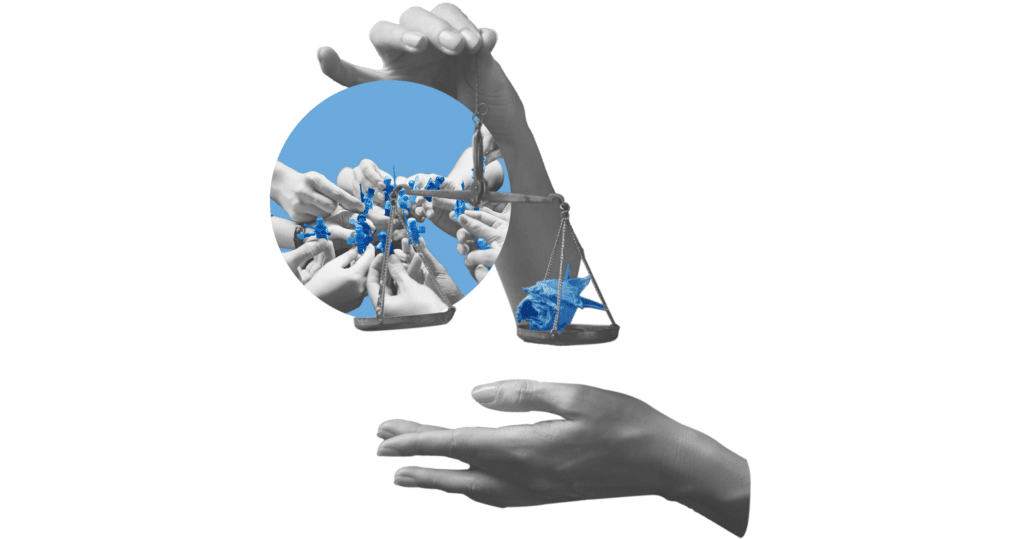What are we talking about when we talk about feminine leadership? There still needs to be some clarification about the meaning of this term and a significantly higher awareness of its impact on the work environment in which it is applied and on the well-being (personal and professional) of the people to whom it is addressed. What this pair of words is trying to get across is not a battle between the sexes, nor is it an indication of a path to be taken necessarily. It is true, however, that in choosing the leadership style to be adopted, it may be worthwhile for the Management of organizations to reflect on some of the challenges that characterize the constantly changing work environment in which we move today and which the adoption of a more “feminine” approach could lead to overcome effectively.
Let us start by debunking a misconception: when we talk about feminine leadership, we are not trying to analyze where we stand with the gender gap in the top positions of organizations or how women leaders behave, nor are we (more importantly) creating a male versus female opposition.
First, it should be clarified that feminine leadership means a style: a way of managing a company or its employees that sees in its main characteristics the traits generically attributed to the female gender. Its definition contrasts with the masculine leadership style, also called traditional leadership, which is, on the contrary, marked by assertiveness, competitiveness and a hierarchical approach to decision-making.
The fact that they approach traits that we are used to attributing more to men or women does not mean that one style is typical of one and the other of the other: it is more than possible to find women with a more masculine approach or conversely, men with a more feminine approach, and there is absolutely nothing strange about that. Indeed, it is interesting to point out that a study published in the Journal of Organisational Behavior, Questioning the Notion of Feminine Leadership: A Critical Perspective on the Gender Labelling of Leadership, shows that men who exhibit a more feminine leadership style, as well as women with a more masculine leadership style, are perceived as more effective by their co-workers.
It is clear then that there is no right and wrong style: it depends on the predisposition of the person who implements it, the reality in which they find themselves, and how they live their role. The most exciting aspect is that the two types of styles can offset each other: the different leadership styles can be placed side by side and combined to create an adaptable and more effective mix that can be declined according to the required situations. A study published in the Journal of Vocational Behavior has shown that people who combine both leadership styles have higher levels of personal satisfaction and better mental well-being.
Now that we have clarified the terminology let us go more specifically to see what traits most distinguish feminine leadership.

Feminine leadership: the key aspects
To understand what differentiates feminine and masculine leadership, we can begin by analyzing the three dimensions on which these styles operate and how they prove different:
- Individual dimension: Those who enact feminine leadership are likelier to see themselves within a team and less as individuals. So, they will prefer to identify more with the idea of a collaborator, a co-creator, than a boss or commander and will choose the concept of power with rather than power over.
- Group dimension: the women’s approach tends to take a more holistic view, emphasizing issues such as inclusion and engagement and capturing the power of various viewpoints. Indeed, a strong point of this style is valuing individuality for the benefit of the group and collaboration.
- Social dimension: feminine leadership makes each person’s specific knowledge and expertise available to the community. As Mariana Mazzucato also states in her book The Value of Everything, the focus should not be on extracting as much value as possible from those who create it but on adding it differently.
These three dimensions develop through training and implementing specific skills helpful in creating an environment built on principles of flexibility, acceptance, collaboration, emotional intelligence and enhanced mental well-being.
These are:
- Empathy: to understand and respond to the needs of employees and create an environment that is supportive of well-being, engagement and personal growth
- Collaboration: helpful in creating strong interpersonal relationships and nurturing the drive for innovation through encouragement to share ideas, feedback and valuable insights
- Inclusion: the specific characteristics of all people are welcome, and indeed, the difference in backgrounds and experiences is perceived as an asset to promote diversity and equity and seek to undo bias
- Intuition: a skill that makes it easier to make decisions that reflect the values and needs of the team and organization, even at the cost of breaking the rules and taking risks
- Communication: to be enacted through active listening, transparency and a willingness to find a solution to any problem that may arise.
Another concept that is very much akin to feminine leadership is that of vulnerability: as opposed to traditional leadership, which has a granitic leader at the centre who is unwilling to question himself, having a feminine approach also means being aware of one’s weaknesses and shortcomings and using them to create authenticity within the team. Therefore, following a feminine leadership style also leads to publicly admitting, “I don’t know this.” As a result, it makes everyone understand that not being flawless all the time is okay.
READ MORE: TIMES ARE CHANGING: WHAT BEHAVIORS CREATE VALUE TODAY?

Benefits of feminine leadership
As we said at the outset, leadership style is only as good as another, and there is no one-size-fits-all way of running a business.
It is worth pointing out, however, that because of how the world of work is changing and based on what personal and professional priorities are generally gaining space for more and more people, feminine leadership has traits better suited to the emerging context.
At a time when the traditional cultural mechanism is coming into crisis and thus, from a values perspective, collaboration is emerging over the competition, empowerment over the competition, and inclusion over hierarchy, feminine leadership represents the step change needed to build a new paradigm, focused on genuinely putting people at the centre and showing the more human side of leadership.
Moreover, an additional aspect that needs to be considered when reflecting on the leadership style to be adopted is sustainability.
READ MORE: SOSTENIBILITÀ: IL VALORE DELL’ETICA
Several articles, including The Best Way to Meet Climate Goals – and Boost Profits – is to Put Women in Charge by Barbara Balke and Thomas Östros, published by the European Investment Bank, show how companies governed by women or with a style closer to that of women are also those that are better able to respond to the challenges posed by the change needed to chart a path toward corporate sustainability, because they have a greater focus on the issue and a more pronounced resilience, achieved in part through the collaboration of indirect stakeholders, such as suppliers, people from communities or the environment itself.
Moreover, it is clear from Accenture’s research, conducted in collaboration with the World Economic Forum, Shaping the Sustainable Organization, that a more feminine leadership style also helps to achieve sustainability targets that go in the more human direction, such as equity, diversity, attention to local communities, and the creation, in general, of an equal world for all the people who inhabit it.
Among the ways of briefly defining feminine leadership, it often recurs that it is leadership “from behind”. Therefore, in the emerging new context, it can act as a push for the community to move forward on the road ahead to fill the needs and wants of all.





